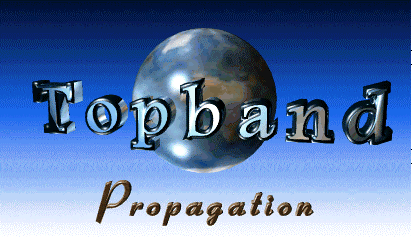The 160 meter band, often affectionately called Topband by enthusiasts, is unique among all the amateur band allocations. It is the lowest frequency range we can transmit on, and it presents technical challenges similar to the 80m band but in greater degree. It is also called “the gentleman’s band”, because almost all the operators you’ll find there are good ones. Technically, I believe that Topband is actually a MF (medium frequency) band, not HF, but those are artificial distinctions.
Topband covers 1800-2000 kHz, but most of it goes unused. As you can tell, this is right above the AM broadcast band. Different countries may have somewhat different allocations for this band, so if you’re hunting DX, you’ll need to be aware of which countries can operate where. (Contesting.com has a good 160m frequency allocation chart.) Practically speaking, though, there are a few rules to live by. First, the bottom part of the band is almost always CW. In fact, it is rare to hear LSB below 1850 kHz, even though it is allowed. LSB rag-chewing is done way up at the top part of the band.
More specifically, CW generally ranges from 1800 or 1810 up through 1840 or 1850. Note that the “DX window” is 1830-1835, and you would be wise to try to make only DX contacts (on CW!) in that 5 kHz segment. PSK31 is fairly rare on 160m, but when there, 1807.5 is probably where you’ll find it.
 As you can guess, 160m is a noisy band. I don’t know about the LSB ragchewers, but the CW guys at the bottom of the band who are looking for long-distances QSOs basically don’t even try in the summer. This is a winter band. And of course it is a nighttime band as well. You can start in the evening just before the sun goes down, and continue until just after sunrise. Chasing “greyline” is one method of catching DX. Like other bands, even during the “right” time of year and day, the band may be cooperative or not. There are “openings” on occasion that really make the band hop, even allowing opportunities for guys with modest stations in Texas to make contacts into Europe. The east coast guys do that all the time, but it is much harder here.
As you can guess, 160m is a noisy band. I don’t know about the LSB ragchewers, but the CW guys at the bottom of the band who are looking for long-distances QSOs basically don’t even try in the summer. This is a winter band. And of course it is a nighttime band as well. You can start in the evening just before the sun goes down, and continue until just after sunrise. Chasing “greyline” is one method of catching DX. Like other bands, even during the “right” time of year and day, the band may be cooperative or not. There are “openings” on occasion that really make the band hop, even allowing opportunities for guys with modest stations in Texas to make contacts into Europe. The east coast guys do that all the time, but it is much harder here.
Topband is one place where having >100 watts really helps. You don’t really need an amplifier to work 6m, 10m, 15m, but way down on 160m it makes a big difference. But of course it won’t matter if your antenna is poor, and 160m antennas can be a real challenge. They are, simply put, BIG. A full-length dipole is ~255 feet. And though they work, a dipole on Topband is a low dipole and will have a high angle of radiation. Some guys use loops, or a sloper off a tower. You can try to build a vertical, but a shortened vertical has it own challenges. Some guys will load up a tower as the antenna. The details of all those are outside the scope of this little article, but personally I use both a full-length dipole and a sloper. The sloper is what is used for chasing DX. You may also choose to have a receive-only antenna, such as a Beverage, which is directional and reduces noise significantly.
Almost all 160m contests are CW-only. However, there is one each year for SSB, and you’ll hear all the CW guys in the lower part of the band using LSB on that one day. It is a fun way to get on the band if you don’t do CW. See CQ160.com for details.
Well, enough of Topband. If your rig has the band, and if you can somehow get an antenna up, it is a challenging but fun way to try something new. The magic of radio is very much alive on 160m!
73 for now, Dave N0RQ
